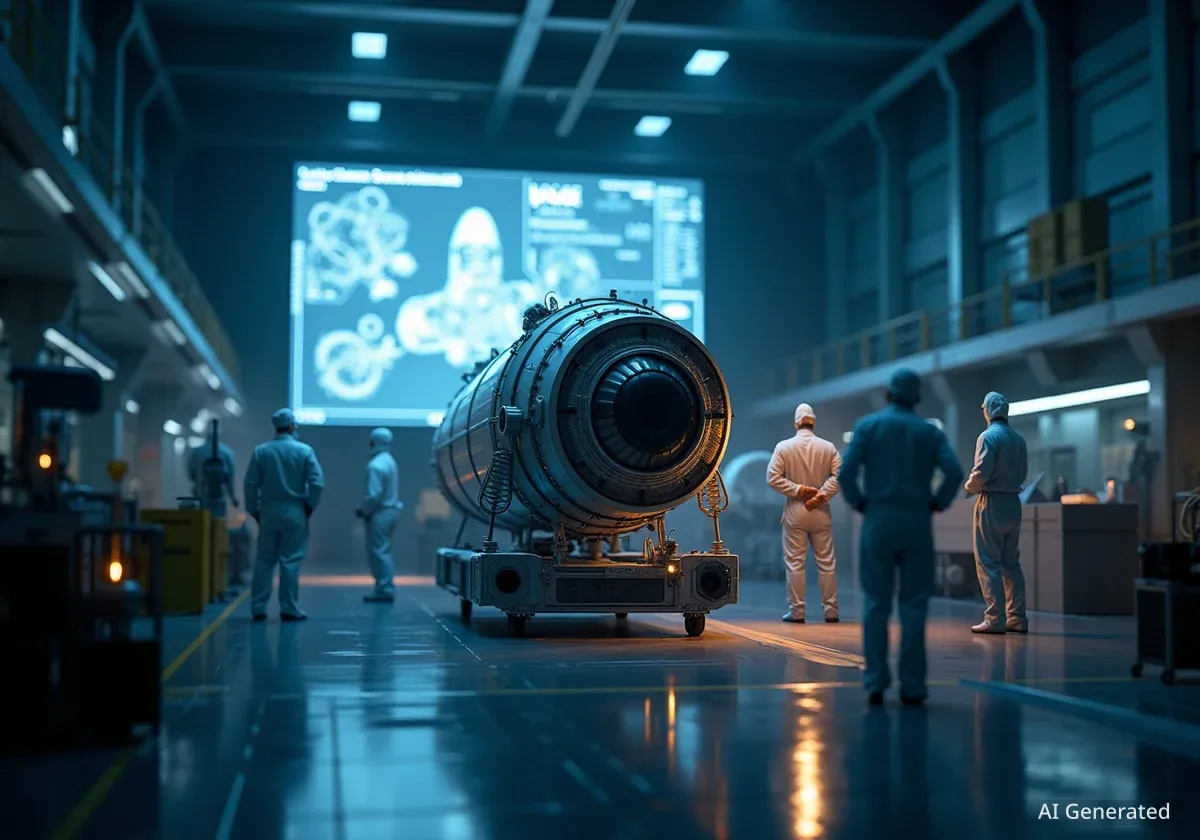Lockheed Martin is undergoing a significant transformation to meet the demands of a rapidly evolving space environment, according to Robert Lightfoot, president of the company's space division. In a recent discussion, the former NASA official detailed how the aerospace giant is restructuring its operations for speed, embracing new commercial practices, and preparing for future challenges in national security and deep space exploration.
Key Takeaways
- Lockheed Martin is focusing on faster development and production cycles to compete in the modern space industry.
- The company's strategy involves a three-pronged approach: explore, connect, and protect space assets.
- New initiatives include a rapid capabilities office called Ignite and a dedicated small satellite production line.
- National defense, particularly homeland protection, is a major driver of innovation, with a potential space-based interceptor test targeted for 2028.
- The company is also rethinking its approach to major exploration programs like Mars Sample Return, proposing more cost-effective models.
A Diversified Space Portfolio
Robert Lightfoot provided a comprehensive overview of Lockheed Martin's extensive space operations, which are organized into three primary business units alongside a new rapid development group. This structure allows the company to address distinct sectors of the space industry, from civil exploration to critical national defense.
Civil, Commercial, and International Missions
The Commercial Civil Space unit handles a variety of high-profile programs. It builds essential weather satellites for the National Oceanic and Atmospheric Administration (NOAA) and develops complex science missions for NASA. A cornerstone of this division is the Orion spacecraft, the vehicle designed to carry astronauts on the Artemis missions to the Moon and beyond.
Strategic and Missile Defense Systems
A second major division, Strategic and Missile Defense, focuses on systems that travel through space. This includes the Trident D5 fleet ballistic missile, a key component of the U.S. nuclear triad launched from submarines. The group is also developing the Next Generation Interceptor (NGI), a critical homeland defense system for the Missile Defense Agency based in Alaska. Work on hypersonic weapons, such as the Conventional Prompt Strike program, is another priority within this unit.
What is the Next Generation Interceptor?
The NGI is a defense program designed to protect the United States from intercontinental ballistic missiles. It will replace the current Ground-Based Interceptors and is engineered to counter more advanced and complex threats. Lockheed Martin is one of the prime contractors working on this high-priority national security project.
National Security and Intelligence
The National Security Space organization serves the U.S. Space Force and the intelligence community. Its portfolio includes the production of GPS satellites that provide positioning, navigation, and timing services globally. The unit also builds Overhead Persistent Infrared (OPIR) satellites for missile warning and is heavily involved with the Space Development Agency's (SDA) proliferated constellation of small satellites. A significant portion of this division's work remains classified.
Adapting to a Faster Pace
The modern space industry is characterized by a demand for increased speed and agility, a shift from the traditionally long development cycles of the past. Lightfoot acknowledged this change, stating that Lockheed Martin is actively transforming its culture and processes to keep pace.
"Speed is going to be something we haven’t seen before," Lightfoot remarked, noting that in some cases, government acquisition is moving faster than industry. "They’re using a risk-based approach: move fast where you can without taking ridiculous risk."
The Ignite Initiative
To foster rapid innovation, Lockheed Martin created a group called Ignite. This office functions as a rapid capabilities unit, tasked with developing and flying technology demonstrations outside of the company's standard procedures. The goal is to retire technological risk quickly. By proving new systems in space, Ignite can present mature solutions for larger government programs. One of its successes is the LM 400, a midsize satellite bus that went from concept to launch in less than two years.
Streamlining Satellite Production
Recognizing the trend toward large constellations of smaller satellites, Lockheed Martin has made strategic investments to change how it builds spacecraft. The company acquired Terran Orbital, a manufacturer of satellite buses, to leverage a common, repeatable platform. This move helps standardize design and reduces engineering costs. Furthermore, the company established a "Speed Center," a production line dedicated to small satellites. According to Lightfoot, at any given time, there are 26 or 27 satellites in various stages of assembly, a model starkly different from building large, one-of-a-kind spacecraft.
By the Numbers: Lockheed Martin Space
- Employees: Approximately 22,000 people
- Locations: 38 sites around the world
- LM 400 Bus Development: From concept to launch in under 2 years
- Smallsat Production: Up to 27 satellites in concurrent assembly
Protecting the Homeland from Space
A significant portion of the discussion focused on the evolving security landscape, where space has become a contested domain. Lightfoot emphasized the growing threat from adversaries like Russia and China, who now possess capabilities that can reach the U.S. homeland in ways not possible decades ago.
A New 'Moonshot Mentality' for Defense
Lightfoot described the need for a "moonshot mentality," similar to the Apollo program, to address these threats. He argued that protecting the homeland is an effort that requires the entire nation, involving collaboration across government and industry. It cannot be accomplished by a single company. This approach, often referred to under the umbrella of "Golden Dome," aims to integrate existing defense systems with new technologies.
A key area of development is space-based interceptors. While the concept was explored in the 1980s, Lightfoot stated that today's technology is vastly more capable. He confirmed that the industry is aiming for a potential test of a space-based interceptor by 2028. "We just need to get going—the clock’s ticking," he said.
Rethinking Space Exploration
While national security is a major focus, Lockheed Martin remains deeply committed to civil space exploration. The company is central to NASA's Artemis program, which aims to return humans to the Moon.
New Models for Mars and Lunar Missions
Lightfoot revealed a proactive approach to mission planning, citing the Mars Sample Return program as an example. When the program's projected cost grew to what he called an "unacceptable level" of over $8 billion, he tasked his team with designing a new architecture from scratch. The result was a concept to achieve the mission for under $3 billion, which Lockheed Martin proposed as a firm-fixed-price contract.
This illustrates a shift toward a more commercial mindset, where NASA sets the high-level mission requirements—like "go get the samples and bring them home"—but does not dictate the specific design. This model was successfully pioneered in NASA's commercial cargo and crew programs.
Looking ahead, Lightfoot suggested that the Orion spacecraft could also transition to a service-based model after the Artemis V mission. In this scenario, Lockheed Martin would operate the vehicle, with NASA acting as a customer, similar to the current arrangement for commercial flights to the International Space Station.
The Path to 2028
Looking toward the future, Lightfoot outlined key milestones for success by 2028. For the "connect" part of the company's strategy, this includes having critical military communications and GPS III-F satellites operational. For "protect," he expects the proliferated satellite architectures to be fully functional and relied upon by warfighters. In exploration, he anticipates that Artemis III will have successfully landed astronauts on the Moon.
Ultimately, Lightfoot stressed that the industry is ready to tackle these complex challenges. The focus now is on integration, partnership, and moving faster than ever before to ensure security and advance human presence in space.





